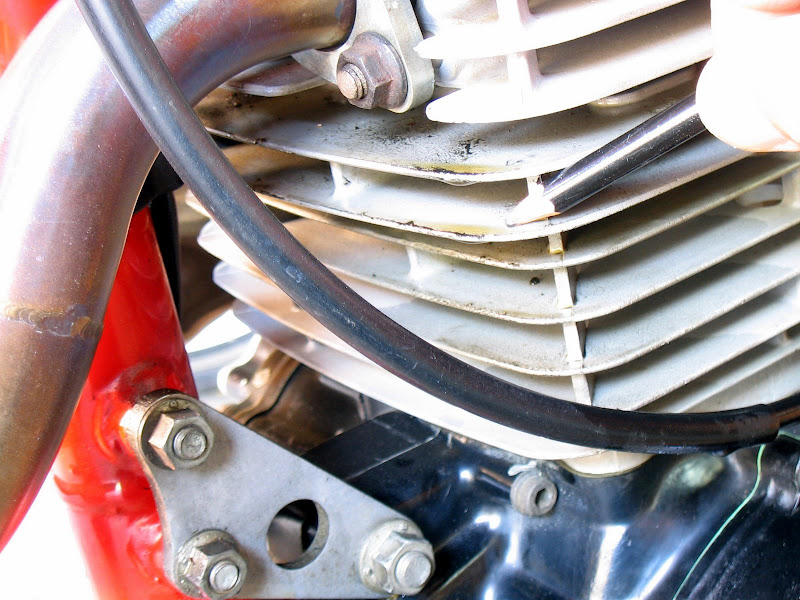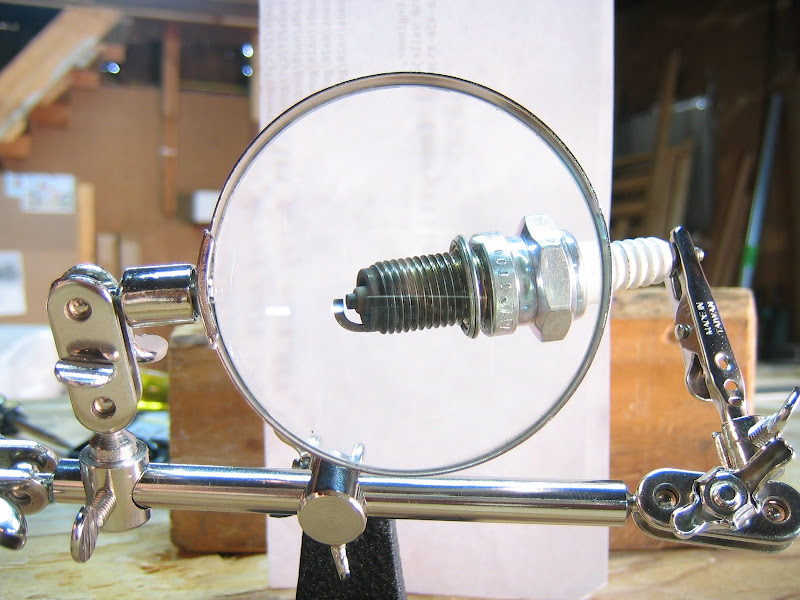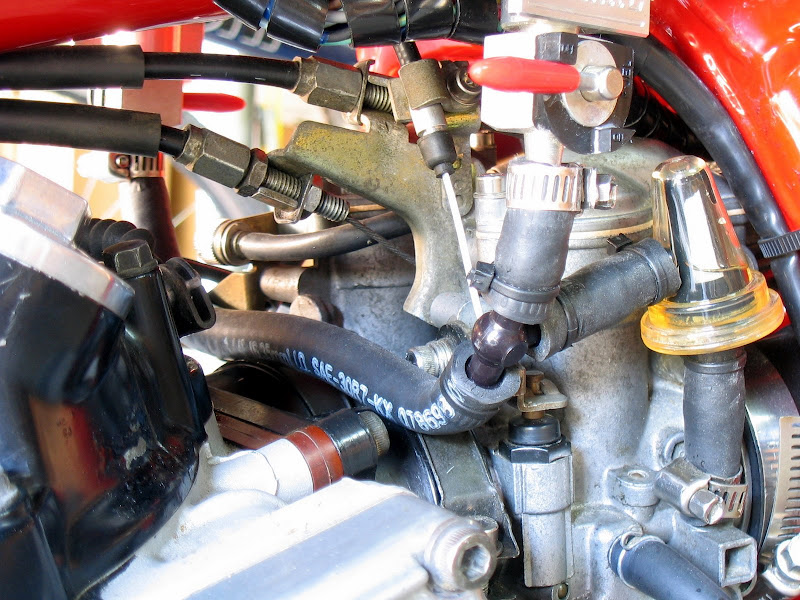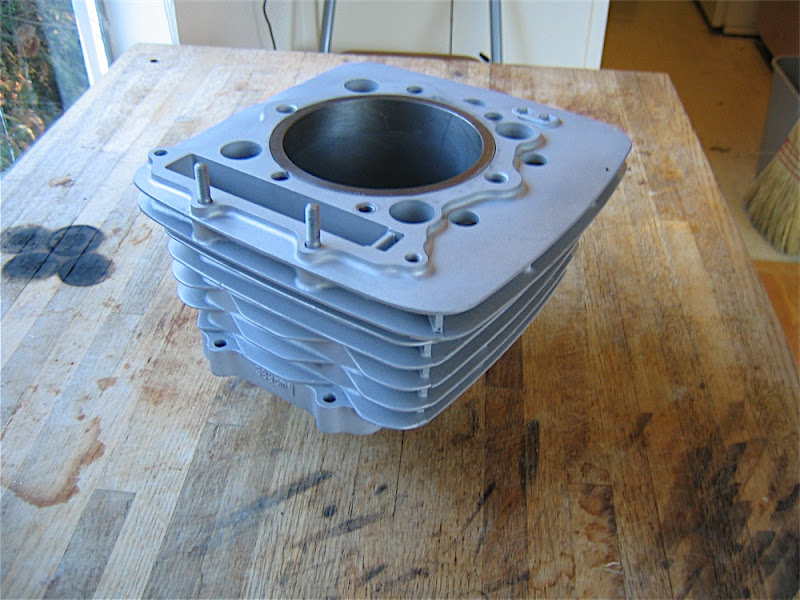OK, a handful of scrambles up into the hills and around briones reservoir, and I've accumulated a little data. Butt dyno says it's pretty good. Got a bit of an oil leak around the cylinder head, left side. Now a little oil leak aint the end of the world and there are more than a few XL600's out there with the affliction...I prefer to think of an oil leak as affirmation of oil actually getting to that part of the insides, myself...would be awful lot worse if it weren't. Still, how much is too much? I notice little spatters of oil on my left boot after a ride, so it's obviously producing more than just a little bit. I'm guessing that black stuff is road soot as opposed to some sort of precipitate from the oil, which itself looked pretty clean to me:

Here's a closeup of my plug. I did a Wide Open Throttle run in an industrial area right near home, probably not long enough to truly test that fuel circuit but still here's what the plug looks like

And finally, that rubber interface between the carbs and the intake manifuld does get pretty hot, not sure how I feel about the fuel line draping across like that. There's a mechanic's joke from the North Woods about assessing something ambiguous yet critical like this, you're supposed to shrug and then say: "It's probably OK". But you're laughing because you know that's the same thing muttered by regretful space shuttle engineers, aircraft ground crew men, and any number of botched shade tree mechanics out there.

Addendum
Here's a picture of the cylinder when I was doing the engine rebuild. I don't see how oil could be weeping out the left side of where the head makes contact...most likely oil coming from somewhere else...but where...








